The bag you carry your groceries home in, or the straw that you sip from, could end up in your stomach…

Our oceans are filled with plastics and so is our seafood. Plastics have been identified in all our world’s oceans, from the polar Arctic and Antarctic regions, to the lush tropical equator. Animals throughout the globe are now commonly ingesting plastics and microplastics. Even organisms in the deepest depths of the oceans are being affected by plastic pollution.
Once plastics reach the ocean they never disappear. They break down into smaller and smaller pieces until they wash up on shore or are eaten by marine life. Even the tiniest, microscopic animals in the ocean, zooplankton, which make up the largest portion of oceanic food webs, have been shown to ingest microplastics. Research at the Plymouth Marine Laboratory in the UK has recorded this occurrence and made the video publicly available.
Larger and larger animals eat those small creatures and the plastic particles migrate up the food chain, until finally being ingested by the ultimate apex predator, humans!
The plastics that we use conveniently every day are ending up inside our stomachs, just as they do in the stomachs of the animals in the sea. Fish and shellfish for human consumption have already been identified as being contaminated with plastics in Europe, Canada, Brazil, and the coast of mainland China.
How Much Plastic Are You Eating?
Bu hikaye Asian Diver dergisinin Issue 01 - 2019 sayısından alınmıştır.
Start your 7-day Magzter GOLD free trial to access thousands of curated premium stories, and 9,000+ magazines and newspapers.
Already a subscriber ? Giriş Yap
Bu hikaye Asian Diver dergisinin Issue 01 - 2019 sayısından alınmıştır.
Start your 7-day Magzter GOLD free trial to access thousands of curated premium stories, and 9,000+ magazines and newspapers.
Already a subscriber? Giriş Yap
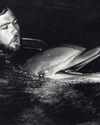
The Sea Specialist: An Interview With Bret Gilliam
Most people learn to crawl before they walk, but there is a man who learned to swim before taking his first steps. Diver, entrepreneur, writer, athlete, maritime specialist – Bret Gilliam is the complete package. Just add water.

The Best Of Diving In Southeast Asia: Explore The Amazon Of The Seas
Southeast Asia encompasses the world’s most biodiverse reefs and some of the best diving anywhere on the planet. From the tiniest and rarest critters to huge fish schools and the biggest pelagics, the region has it all, and there’s something to suit divers of any level.
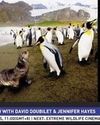
Below With David Doubilet & Jennifer Hayes
Best known for their work with National Geographic, David Doubilet and Jennifer Hayes came together to discuss their work with the youth, and, as Jennifer put it, “submerging with the emerging talent”.
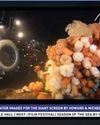
Underwater Images For The Giant Screen
Howard and Michele Hall are best known for their success in underwater IMAX filmmaking.

Journey To Filming For National Geographic Wild Brazil
Cristian is an acclaimed and highly versatile Brazilian wildlife filmmaker who works both underwater and topside.
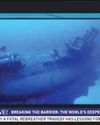
Breaking The Barrier: The World's Deepest Dive
David Strike shared a brilliant presentation about the history of deep diving and how Lt. George Wookey achieved the world’s deepest dive in 1956 using a surface-supplied rebreather.
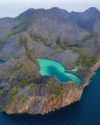
Dive the Golden Land
The Best of Diving In Southeast Asia

OFFICIAL LAUNCH OF BLUE HOPE
Top Session of the Week (14,319 (Views) / 42,831 (Reach)
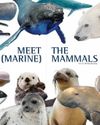
MEET THE (MARINE) MAMMALS
MEET THE (MARINE) MAMMALS

Fashion Faux Pas
What can be done to mitigate the impact of the garment industry on our oceans?